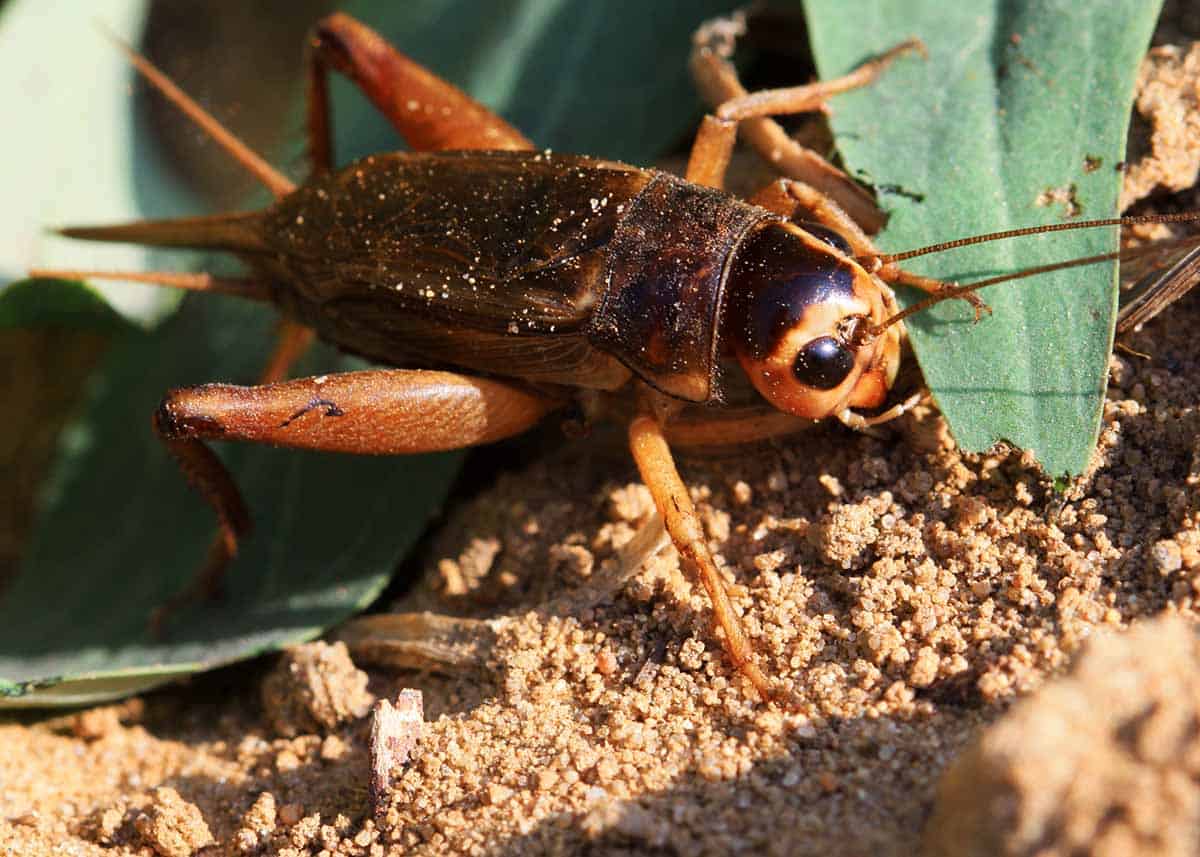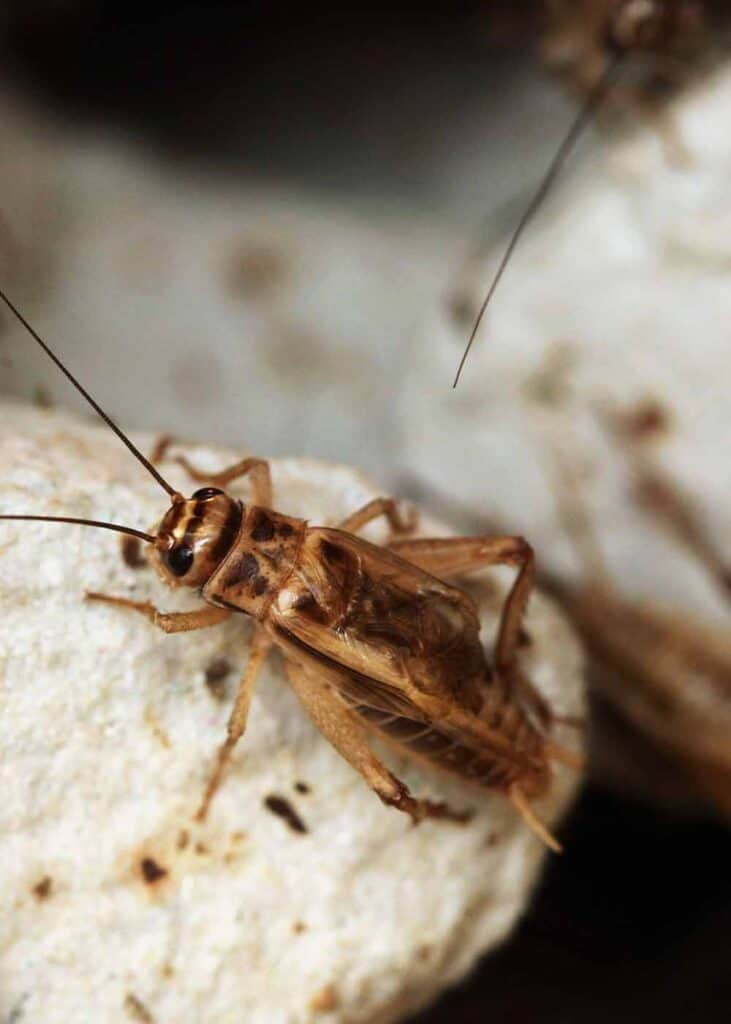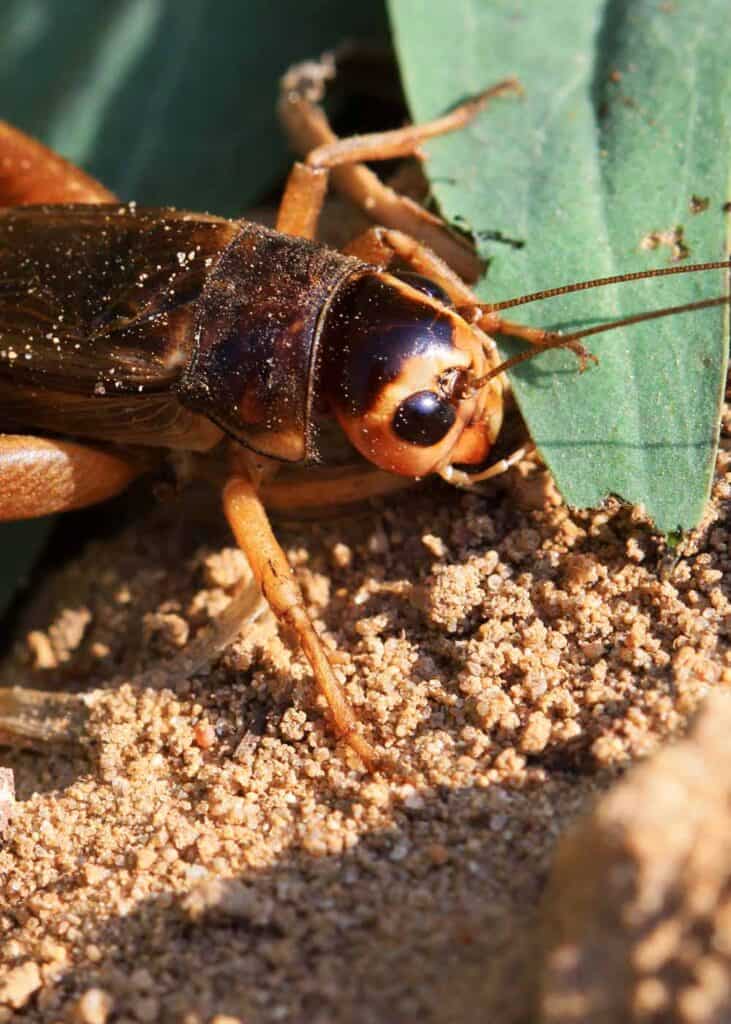Knowing what crickets eat is important to know when trying to prevent an infestation. Or when trying to keep your feeder crickets alive. Crickets are found everywhere in the world (except for Antarctica). These well-adapted creatures may be so widespread due to the variety of their diet.
Crickets have an extremely diverse diet. They will eat fresh fruits and vegetables, along with decaying foods and fungi. Most crickets will also eat aphids, insect larvae, and other animal-sourced food.

In this article, we’ll explore the diet of wild, captive, and baby crickets. We’ll also answer frequently asked questions about a cricket’s typical diet. Read on to learn more.
Table of Contents
What Do Crickets Eat in the Wild?
Some crickets are omnivorous and herbivorous, and some are scavengers. Given the immense variety in cricket species and diet, we’ll review the most common foods wild crickets eat.
- Many crickets feast on flowers, fruit, leaves, shoots, seeds, and grasses.
- Omnivorous crickets incorporate aphids, insect larvae, and eggs into their diet.
- Scavenging crickets like to eat decaying matter, such as rotting fruit and fungi.
Here’s how to trap crickets (live or lethal).
What Do Captive Crickets Eat?
If you’re interested in keeping crickets in captivity, the good news is that crickets are highly adaptive to different diets.
Many species of crickets thrive on dog food! However, it’s essential to learn about the specific dietary needs of individual species.
Common foods to feed your pet cricket are fresh fruits and vegetables, aphids, ants, and other small insects.
Did you know there are over 900 species of crickets? With that many species, it’s impossible to list the diet of every single cricket.
When we anole lizards, we also kept crickets as food for them. We found the crickets surprisingly easy to keep alive.
What Do Baby Crickets Eat?
Baby crickets are referred to as nymphs in the cricket life cycle.
Some reptile and amphibian owners raise crickets as food for their other pets. For this reason, it’s important to know what crickets eat at all life cycle stages.
Nymphs are notoriously monstrous eaters. They are not picky about their eating, and their diet can vary widely. Typical nymph foods include seeds, plant matter, animal matter, and fruits and vegetables.
Cricket Diet FAQs
You’ve got questions, and we have answers! If you still have questions about a cricket’s diet, you may find them answered here.
If your question isn’t answered, please share it in the comment section so we can add it to the post.
Is a cricket an herbivore?
The short answer? Sometimes. Some crickets rely on foraging for fruits, grasses, and seeds.
- Certain species of crickets can target crops, which is why they’re often referred to as a pest.
- Other crickets rely on hunting small insects, eggs, and larvae for their food source.
What should I feed crickets?
While crickets are highly adaptive, it’s important to determine their species and specific food preferences. If you’re unsure what type of cricket you have, offering a diet with a wide variety is your best bet.
Include fresh fruits, vegetables, seeds, and small insects. Over time, you’ll see what the cricket prefers.

What is a cricket’s diet?
With over 900 species of crickets on earth, it can be daunting to figure out a specific cricket’s diet. However, the majority of crickets follow an omnivorous diet.
In large numbers, crickets can devastate crops.
They can also attack weeds and aphids. Aphids are generally considered harmful to every gardener and farmer, so having omnivorous crickets around to lower the aphid population can certainly be a plus.
Can crickets eat apples?
Yes! Apples can be a part of a nutritious diet for crickets. If you’re breeding your crickets to be fed to other pets, you’ll want to feed your crickets the most nutritious diet possible.
This will ensure they will be a nutritious food source for your pet. This process is known as gut loading.
When feeding your crickets apples and other nutritional foods, don’t worry about measuring specific amounts of food. Crickets are self-regulating feeders. Just replace fresh food and water at least every two days. Don’t let the food get moldy.
Do crickets eat plants?
Yes! Crickets eat a wide variety of plants and plant matter. Crickets enjoy young shoots, grasses, leaves, fruits, seeds, and nuts.
In captivity, most species of crickets enjoy fresh leafy greens, fruits, and vegetables. In the wild, they will typically forage most types of plant matter.
While they can keep your weed population in check, large amounts of crickets can be monstrous pests to farmers. The field cricket, for example, can devastate large amounts of crops.
Do only spiders have 8 legs? Here are 11 types of 8-legged animals.

So that’s what crickets eat. But do you know what eats crickets?
Your Turn
Have a tip or question to share? Please join me in the comments below!
- About the Author
- Latest Posts
Bryan Haines is a co-founder and writer at The Buginator. And is working to make it the best resource for taking back the outdoors from biting, stinging pests.
He also blogs about travel at Storyteller.Travel and photography at Storyteller Tech. Bryan is a partner at Storyteller Media, a publishing company he runs with his wife, Dena.
